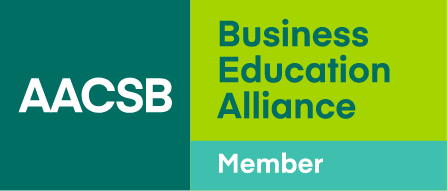Beyond the Business School Classroom: Real-World Experience With Co-operative Education
Katherine Murphy was interested in restaurant placements when she looked at the BCom program at the University of Victoria in Canada. Her goal was to find a small restaurant, still in its start-up phase, where she could help grow the business and become involved in the creation of food culture in Victoria. She ended up finding and spending all of her co-op placements in local, seven-table restaurant Nourish Kitchen & Café in Victoria, including working with the owner to create their first official business plan. Thanks in part to Katherine’s time at Nourish, it has now become two bustling restaurants with 35 employees and over 50 seats. “At 25, I find myself the general manager of a multimillion dollar small local business. The single most valuable part of my education was the hands-on experience that I gained through my co-ops,” says Murphy.
Business schools are increasingly differentiating themselves through not just their curricula and programs but also through a range of unique experiences that allow students to apply knowledge to real business situations. For many schools, this experiential learning takes the form of co-op placements, which are opportunities for students to work in a particular business for a short period of time during their degrees.
AACSB-accredited school Peter B. Gustavson School of Business at the University of Victoria is one of many schools around the world that builds these types of experiences into their curriculum. While many programs offer these co-op placements as a voluntary component, Gustavson builds these opportunities into the core curriculum as mandatory. All students must complete three four-month co-operative work terms, which provide unique opportunities to try out different jobs, build competencies, and earn income—and possibly a job after graduation.
What Is Co-operative Education?
Co-operative education programs are not new, and many schools offer some sort of co-op. The Canadian Association for Co-operative Education defines these program as alternate periods of academic study with periods of work experience in appropriate fields of business, industry, government, social services, and the professions. Gustavson’s co-op program is accredited by the Canadian Association for Cooperative Education and as such must follow their placement standards, which require at least 35 hours per week of work for a minimum of 12 weeks. During that time, students must be given productive work that is supervised and evaluated.
What’s Unique About Gustavson’s Co-op Program?
At the University of Victoria, the co-op program started in the mid-1970s when the university recognized that science students could benefit from practical experience in industry as part of their education. Consequently these same students could then enrich the learning of others by bringing their co-op experiences back into the classroom. Over time this program spread to other disciplines. Today the University of Victoria has the third-largest co-op program in Canada, and every undergraduate program at the university offers co-op placements.
Gustavson’s co-op differs from co-op programs offered at other business schools in two main areas, according to Gloria Darroch, Gustavson’s co-op program. “First, the co-op program at Gustavson is mandatory. Undergraduate business students must complete three four-month work terms, and MBAs complete one or two. Many business programs have co-op, but mandatory co-op is rare. Second, our work term goals include a competency framework wherein students choose which competencies they want to improve during each work term. These may include personal management and employability competencies, discipline-specific competencies, and intercultural competencies. Students and employers will then assess these competencies mid-way through the work term and again at the end. This is in addition to traditional reflection assignments (like reports or online discussions).”
Why Should Students Look Into Co-op Opportunities?
Co-op program provide a number of benefits to all parties involved. Students have the chance to gain relevant experience, apply their knowledge, and build their professional networks, but they can also earn money to finance their education. Darroch adds, “Co-op programs expand employment opportunities for students beyond typical summer or part-time jobs and provide options for students to try out different career paths. Many students do choose our program because of the mandatory co-op component. Although it may take longer to graduate, students will be graduating with almost a year of relevant work experience. It's not uncommon for graduating students to find work with former co-op employers, which is a testament to how students make an impact in their co-op workplaces.”
For employers, four months is a low-risk way of evaluating a potential new employee, and in return they receive a student who is up to date on current theories and practices and who comes in ready to propose and implement new and exciting ways of working.
For the school, co-op programs open up access to potential corporate partners, mentors, and donors. “Complementing the non-traditional programming of our School of Business, co-op helps students recognize, articulate, and apply their learning, strengthening their competitiveness in the job market,” says Darroch. “Co-op has also enhanced awareness of Gustavson students with a broad range of organizations.”
What Are Other Examples of Student Co-op Placements?
Fourth-year Bachelor of Commerce student Karley Skaret started her co-op placement at RGO Office Products as an office clerk but was quickly promoted to a finance and operations role in which she worked on a number of projects, including process mapping and process improvement projects and an internal communication project. As a result, she was nominated, and won, the 2015 co-op student of the year.
Leat Ahrony did a co-op term as a financial planner at Annette Quan in Vancouver. During her time with the firm she helped them obtain a Vancouver Island Green Business Certification and implemented a recycling and composting system in the office. Because of her impact on the business, as well as on campus, she was nominated, and won, the Student Sustainability Champion Award in 2015.
“Co-op placements are not job placements,” clarifies Darroch. “It is a collaborative and integrative learning and career development process. Co-op staff are here to support and empower students to be more effective and proactive in their career planning.” Placements are both arranged by the school and the students themselves who more often than not go out and find the placements that they want and that make them happen.
Learn more about the Peter B. Gustavson School of Business co-op program.




